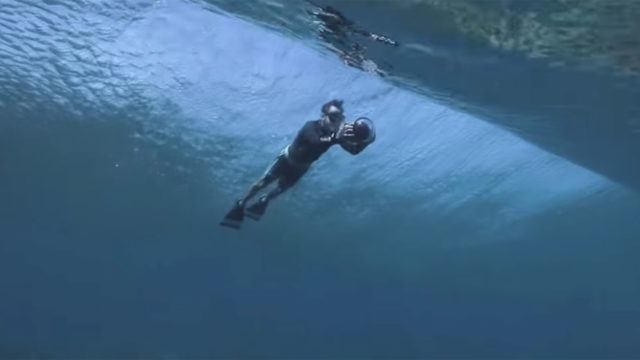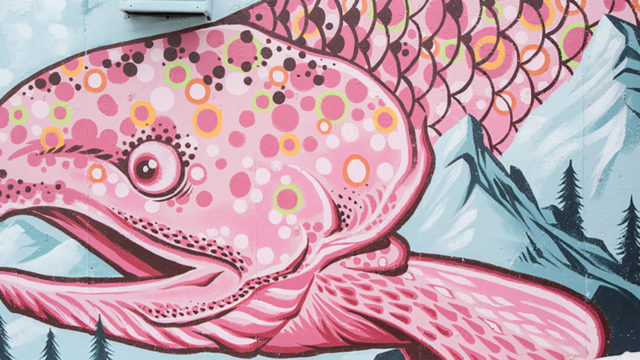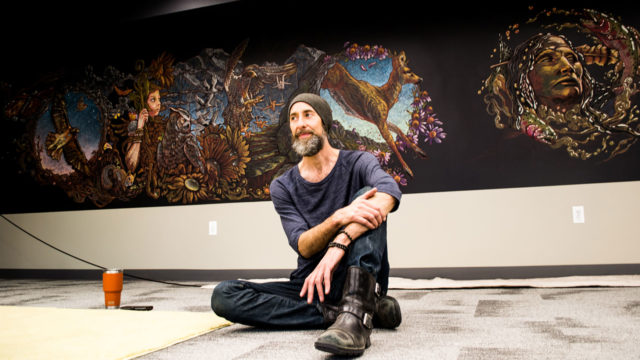Editor’s note: See all our features in March’s art issue here.
We see the signs, but the NoBo Art District (short for North Boulder), which runs along Broadway Ave. from the intersection of Lee Hill to Violet Avenue, does not feel much like a vibrant art district, where artists, businesses and people express and participate in a lively art scene.
While the nonprofit of the same name – NoBo Art District – coordinates events such as its First Fridays event, which seeks to attract visitors to the area’s galleries and businesses on the first Friday of the month for 10 months a year, the city’s only official art district struggles to represent.
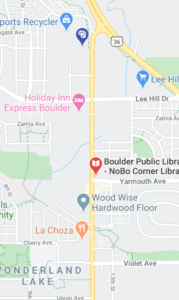
There is little if any public art in the area, and studios – and their work — are mainly hidden from view in warehouses or side streets. As the city’s only art district, shouldn’t visitors and residents feel an arts scene here, especially with the degree of artists present within Boulder city limits (third highest in the nation)? A sense of creation should ooze out of the area, of ideas in motion, of trial and error and raw effort.
As of now, the district presents construction, some warehouse buildings, and an overwhelmingly beautiful view of the Flatirons that dominates anything happening on the streets. A disconnect exists between what the art district could be, and what it is.
As the NoBo Art District rings in its 11th year and its third as a recognized “creative district” by the Boulder City Council, we evaluate the city’s only art district — what’s working, what’s not and how the city can cultivate a more vibrant arts culture in general. The district is a great start, but how does can it stimulate a vibrant art scene in Boulder?
A place for artists
As of 2018, the district has grown to include over 176 member artists and a budget of $28,000 but has funding aims of between $75,000 and $150,000. As a nonprofit, it receives funds from “membership structure, branded merchandise, tours, crowdfunding/donations, and partnerships public funding of projects.” The City’s Office of Arts and Culture has dedicated a budget of $165,000 toward a commission of new public art in the district, of which $85,000 comes from the Community, Culture and Safety tax and $80,000 coming as 1 percent of the Restricted Transportation Capital Project.
With the Dairy Art Center, BMoCA, CU’s art museum and the Canyon Gallery at Arapahoe’s Public Library, Boulder has some great art, some money and growing support. But the NoBo Art District art scene, as a representative of the larger Boulder art landscape, is left without much life.

NoBo’s mural by Jason T Graves. Source: noboartdistrict.org
The NoBo Art District notes it is “actively building a community among artists, businesses and the North Boulder neighborhood.” As we see murals popping up in areas around town, art hung in businesses like Colors Hair Salon and First Friday events sprinkled throughout NoBo’s designated footprint, the district does present some art flair.
The crown jewel of NoBo’s Art District is the annual Open Studios tour that takes place every October. The event requires year-round planning, and achieves high attendance.
This, along with First Friday art walks 10 months out of the year, allows the artist and gallery district members to throw open their doors to the greater Boulder audience, with a map published two weeks in advance that lists up to 20 open studios. It also opened the NoBo Art Center, a community art space, in the last 18 months; it stands tucked among warehouses and has limited open hours (but it’s movement in the right direction).
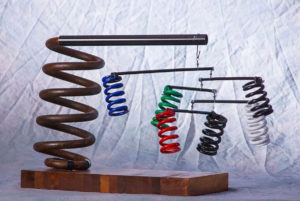
While many artists do exist and show in the NoBo Art District in a variety of mediums and styles, a disparity exists between the existence of studios and a scene.
Michael Deragisch, an artist who specializes in kinetic sculpture through mobiles, sits on the board for the NoBo Art District. He says that more goes on than the public knows, though admits these things happen in disparate pockets with little connection, and agreed that a lack of clarity plays culprit to an enhanced knowledge of the scene.
“Overall, the level of creativity is off the map here,” Michael says. “When you dig into some of the galleries and other places that display art, it’s a pretty marvelous and eclectic bunch of artists that exist here.”
The required digging is part of the challenge here.
Admin + heart

“There’s a couple clusters of studios that are always open,” says Michael, “like Emerald City — an area right near Wapo’s restaurant on Broadway, and starting a year and a half ago, the Downtown Boulder Business Association joined the NoBo Art District. Last year we had a shuttle bus taking people from downtown to NoBo.”
This year the NoBo Art District plans to give out RTD vouchers so attendants can ride the Skip bus up Broadway.
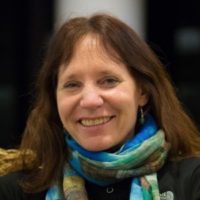
Charlotte LaSasso, executive director for the Boulder Arts Alliance, which provides artists with grant programs and fiscal sponsorships, agrees that while Boulder’s art scene is growing, part of the problem lies in organizations’ ability to reach and inspire beyond promoting events on cultural calendars.
“You have to know where to go,” says Charlotte. “The chances of someone walking into a warehouse area after dark without any idea of what’s going on are very slim. But if you happen to know there’s an event or an opening in a particular gallery, you’ll wander around.”
Most of the studios in NoBo’s warehouse district live just west of Broadway and north of Front Range Boulevard, and though more and more artists have started taking over buildings in recent years, these locations remain more off-grid than public.
While efforts are being made, the area now doesn’t quite approach the rawness of the 1970’s and 80’s Boulder art scene when commercial property prices weren’t so high, and environments for experimentation such as the experiential event “Visual Eyes,” staged in 1987 by Don Hobbs and a team of volunteers were easier to facilitate.

“Visual Eyes took place in an unfinished commercial building with a ton of artist work on display,” remembers Mary Horrocks, executive director of Open Studios. “There were even models from a hair salon on Broadway with structural hair sculptures walking around serving apps and drinks. I think these days Boulder as become a little corporate. It’s harder for arts organizations to have these kind of events.”
Perhaps the need artists feel to get more serious about making a living with art contributes to the lack of spontaneity.
Evoking a feeling
Steven Frost is a conceptual, multidisciplinary artist working in everything from fibers and installation to media and performance, and has shown in galleries all across the country. Currently, he has an outdoor installation draped from the roof of BMoCA’s north side woven from lawn materials and lawn chairs.

His work involves presenting truth about hidden or unknown communities such as the queer community. Steven lives and has a studio in NoBo, and feels that the NoBo Art District does not really encapsulate the creativity in Boulder to the degree that it could.
Steven says he feels that a local, safer art style has emerged in Boulder and in the art district.
“Not to say these aren’t professionals making professional work,” Steven says, “but it seems to focus more on aesthetic,” and not push the boundaries, or explore novel ideas, as powerful art does.
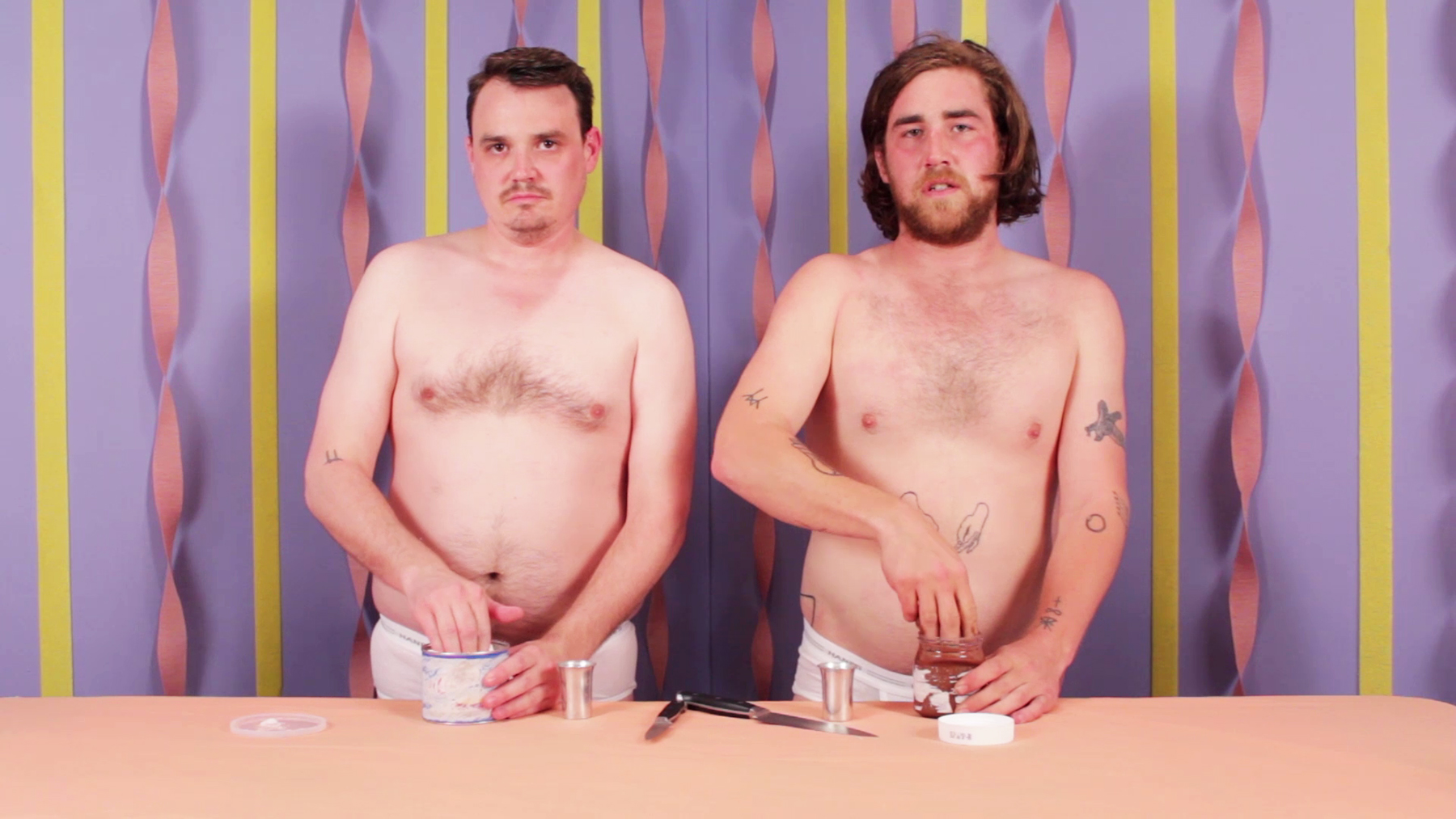
Steven is not the only artist in the area who focuses his energies on showing elsewhere. Contemporary dancer Ondine Geary, who utilizes installation and audience interaction in her raw and visceral performance art, is another.
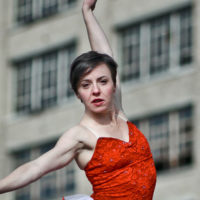
From the ground up
Along with getting more businesses along the Front Range involved, the NoBo Art District is working towards getting more studios open more often and more regularly, with the NoBo Art Center aiming to stay open four days a week.
Yet it still looks like many of the studios may be open appointment only. Michael also told us of a hopeful move by the Business Improvement District involving a vote coming up this year to begin taxing themselves to put money into a fund that will go directly towards improving the area to feel more inviting to people. These improvements would include increased signage and lighting, a more accessible lay of the land to pedestrians looking to soak in the arts.
While both sides of the coin hold truth, it becomes exceedingly clear that to truly connect all of the dots among Boulder’s artists and creatives, there needs be a more inclusive and multifaceted creative arts community coming forth that isn’t afraid to stir the pot.
Header Image: Entrance sign to the NoBo Art District. Photo: Paul Hagey



